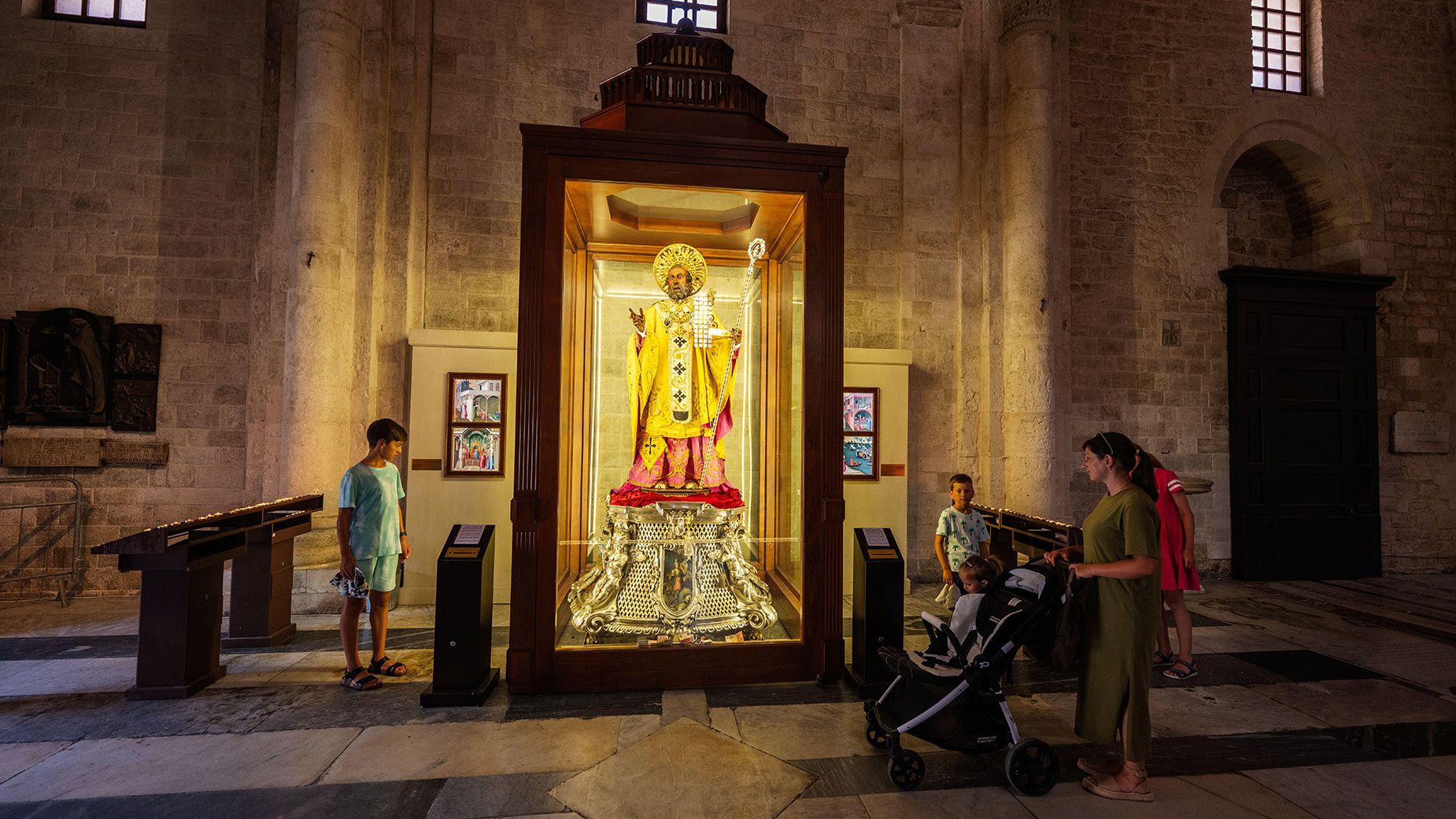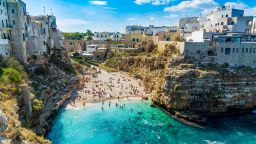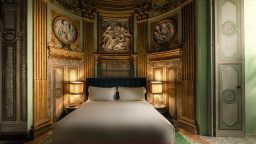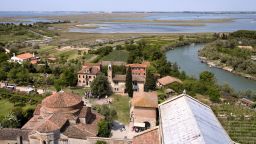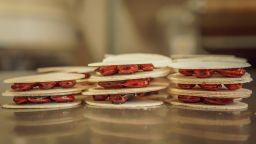Everyone knows that Santa will be doing the rounds at Christmas, squeezing down chimneys, knocking back glasses of whiskey, leaving presents under trees and ho-ho-ho-ing all the way back to the North Pole in his flying sled.
Or – and you’ll want to ask children to look away at this point – will he actually just be lying dead beneath a church named after him in a port in southern Italy?
The town of Bari, located on the heel of Italy’s boot, has laid claim to this alternate Santa story for nearly 1,000 years after the bearded gift-giver’s remains were said to have been interred beneath a church that bears his name.
Santa here is Saint Nicholas, globally acknowledged as the man who inspired the Santa Claus legend. Nicholas, also known as Niklaus or Nicola, was a real-life Christian saint born, not in the frozen north, but in Myra, in what is today Turkey.
Saint Nick, it is believed, was born around 270 C.E., and died 67 years later. He was revered around the Mediterranean for his generosity, especially in Bari. This is perhaps why Baresi sailors stole his bones in 1087 and moved them to their town.
Today, three-quarters of what is claimed to be Saint Nicholas’ skeleton rests in peace beneath the Basilica of San Nicola, Bari’s largest church, where it is regularly visited by Christians of all denominations from all over the world.
Bari’s residents regularly celebrate their connection to Saint Nick, but are somewhat nonplussed about his role in the commercial extravaganza that is modern-day Christmas.
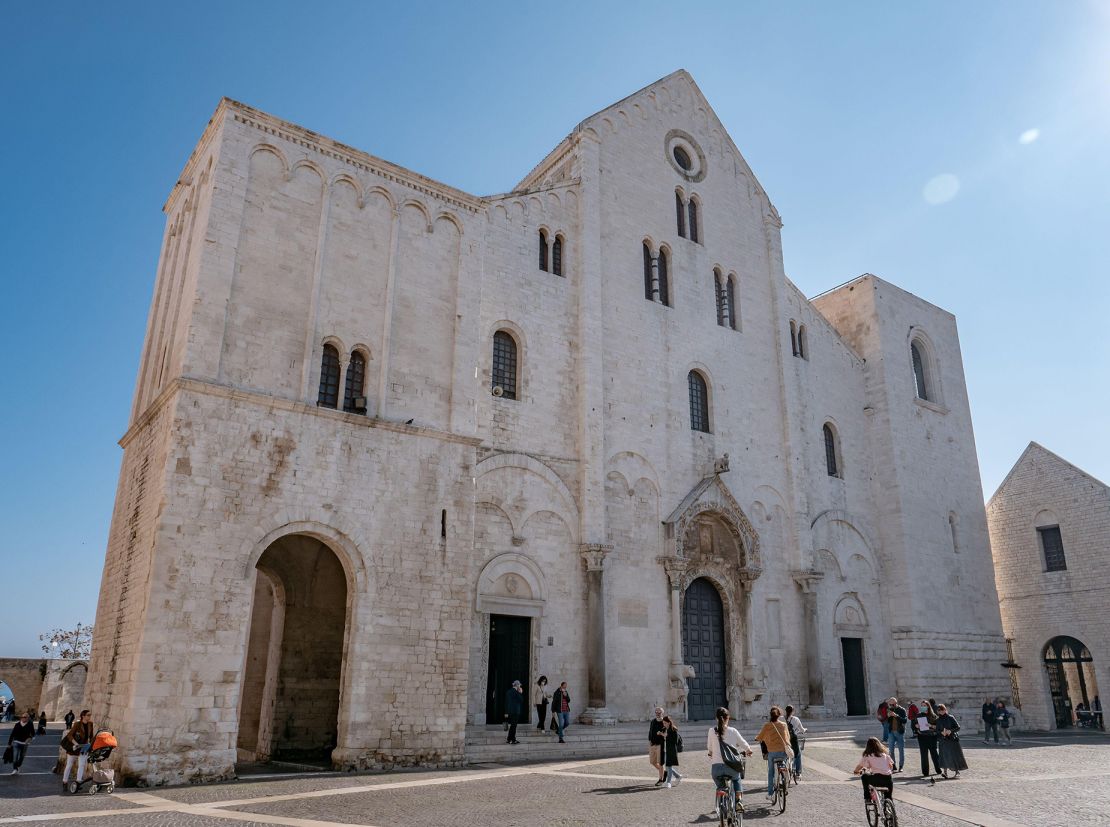
Local hero
“Locals are proud that their city is popular for three things: delicious mussels, pristine beaches and Saint Nicholas,” says Antonio Palumbo, a movie director from Bari who made a documentary about the saint’s link with Santa.
“But they don’t feel that the saint’s cult has anything to do with the city’s Christmas connection.”
Among the people of Bari, says Palumbo, there’s a distinct reluctance to embrace the Santa/Saint Nick origin story, partly because the famous image of a white-bearded man in red was concocted by American fizzy drink marketers.
“Father Christmas is seen as an outsider, a consumeristic figure imported from the States, whose jolly red face and round belly was created and exploited in the 1930s by Coca-Cola for advertisement purposes to push families to buy Coke because kids loved it,” says Palumbo.
Locals, who keep good-luck images and statuettes of San Nicola in their wallets and cars, perceive their local hero as very distinct from Santa.
“We worship our patron Saint Nicholas, we pray to him in hard times, he watches over kids, young women, sailors and traders,” says Maria Rita Mauro, head of the local tourist office.
“He’s our cult, and we don’t see him as Santa, just San Nicola.”
Celebrations for Saint Nicholas Day begin in Bari on the night of December 5. Locals attend Roman Catholic Mass at dawn the next day and then tuck into hot chocolate, pancakes and sticks of fried polenta called sgagliozze. Street concerts are held as the statue of San Nicola is paraded through the old district to a huge Christmas tree. Bars and pastry shops are open non-stop.
As Nicholas is also a patron saint of unmarried women, young girls looking for a husband traditionally line up in the basilica, praying for betrothal.
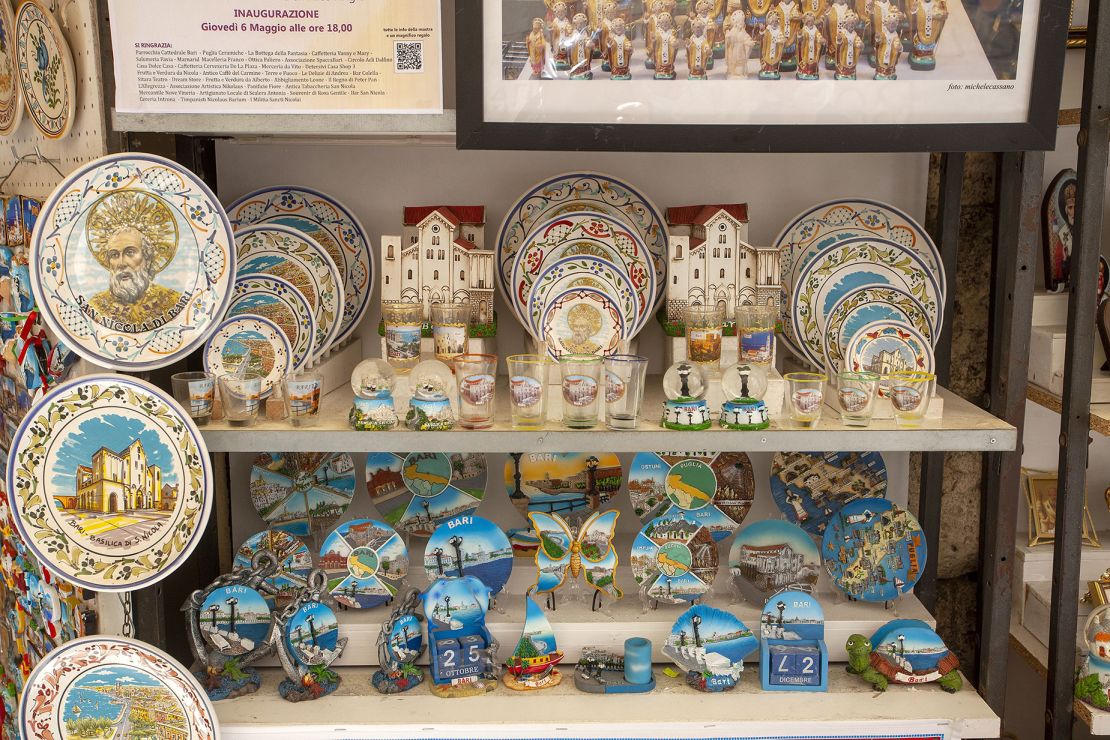
Protector of women
While the people of Bari may be over-protective of Saint Nicholas, local church authorities acknowledge and support the connection between him and Santa.
Father Giovanni Distante, prior of the San Nicola basilica, says they are the same person.
“Father Christmas is merely an evolution and transformation of Saint Nicholas, who is a universal saint worshipped across Christianity, second only to the Virgin Mary,” he tells CNN Travel.
The popularity of Saint Nicholas with Christians worldwide (churches have been built in his name as far afield as Japan) could help explain the global appeal of Santa Claus. As could his reputation for largesse.
According to Father Gerardo Cioffari, archivist of the San Nicola basilica’s research center, the image of Saint Nicholas as bearer of gifts is a historical fact, not merely a legend.
“There’s a documented, famous episode that narrates that one night he threw three bags of gold coins through the window to three maidens, allowing them a decent wedding.”
The girls apparently had no dowry, and their father had been pushing them to prostitute themselves.
Hence he became seen as a protector of women.
In Italy, Saint Nicholas morphed into Father Christmas in the 1500s, bringing presents to children and sliding down chimneys, says Cioffari. He also supports the link despite Bari locals’ unhappiness with its consumerism associations.
“I support the connection because, through Santa Claus, I meet here in Bari people of all races who come to study the origin of Santa Claus,” he says. “The Dutch, Belgian, Swiss and German fans of Santa Claus all come to Bari, but it is a folklore that does not take hold in the city.”
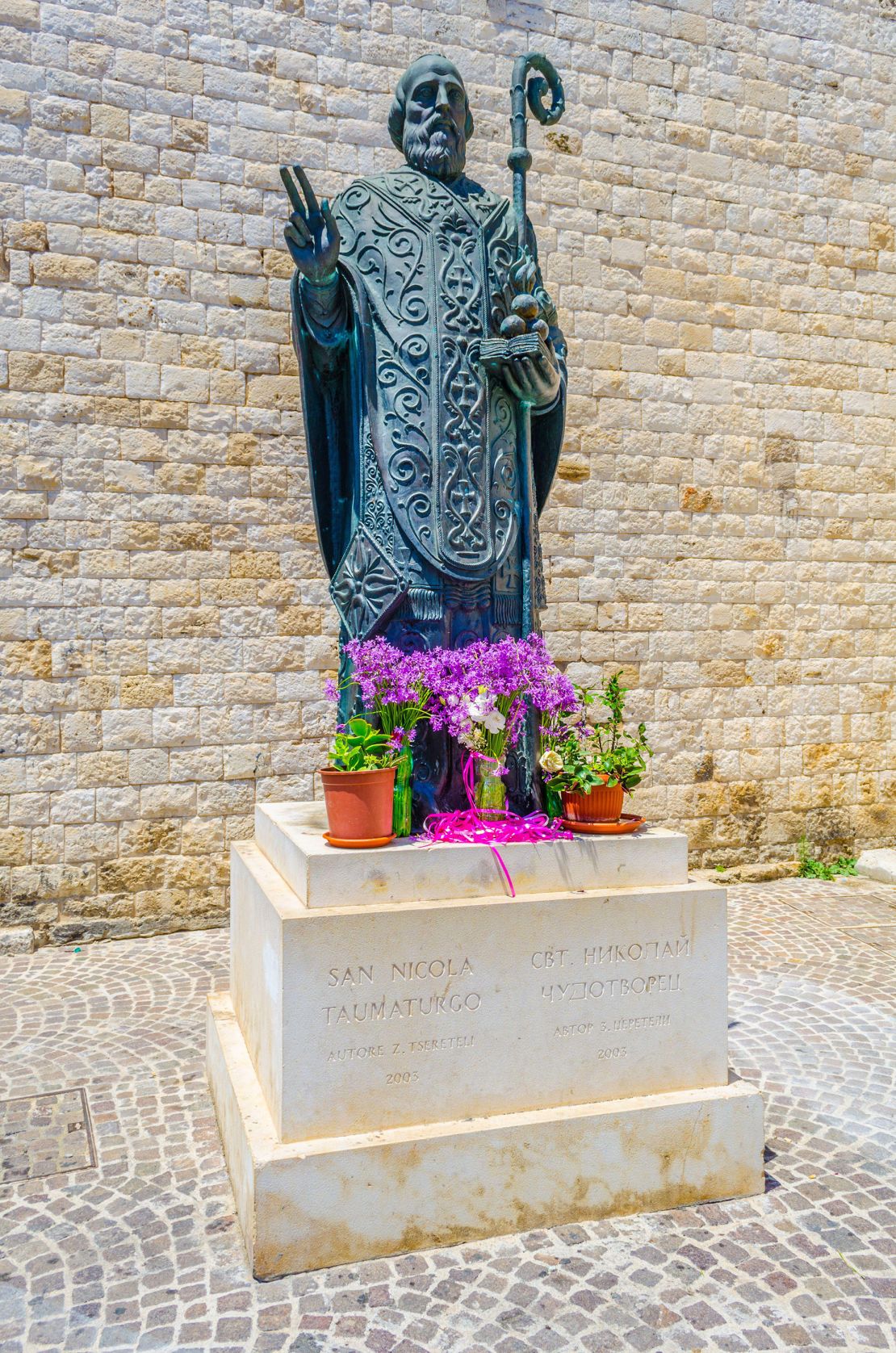
The Coke connection
According to Cioffari’s research, the worldwide metamorphosis of Saint Nick into Santa Claus started in the 1600s when the saint was exported to the New World via Dutch settlers in New Amsterdam, or what is now Manhattan.
“Many American poems and books published in the 1800s, including works by Washington Irving, write about and depict Saint Nicholas as entering homes and carrying gifts to kids on Christmas Eve, and then flying away on a sledge pulled by reindeer,” he says.
In these books, he is still called Saint Nicholas, though the color of his robe is ever-changing.
The success of the red uniform proposed by Coca-Cola in a 1930s campaign “baptized” and consecrated Santa’s image as we know it today, says Cioffari. Most likely because it recalled the red of the drink label.
However, things are slowly stirring in Bari. A new awareness is spreading among some Baresi, eager to boost efforts to exploit the Nicholas-Santa link and turn Bari’s Christmas connections into a tourist highlight.
Rossella Mauro, a former teacher who has written several books on Santa, says young women still come to the basilica on the night of December 5 to pray for a husband.
“I feel very proud that our patron saint inspired Santa. Bari boasts the relics of the real Father Christmas and it is just great that we have his skeleton in our backyard,” she says.
Mauro has noticed that Saint Nicholas has lately taken on more Santa-like physical features in paintings, tourist statuettes and amulets.
“He’s now depicted with a big belly and rosy cheeks, there are little chocolates sold in town shaped like Santa more than San Nicola,” says Mauro. She says some locals even promote their homes as “Santa’s real house.”
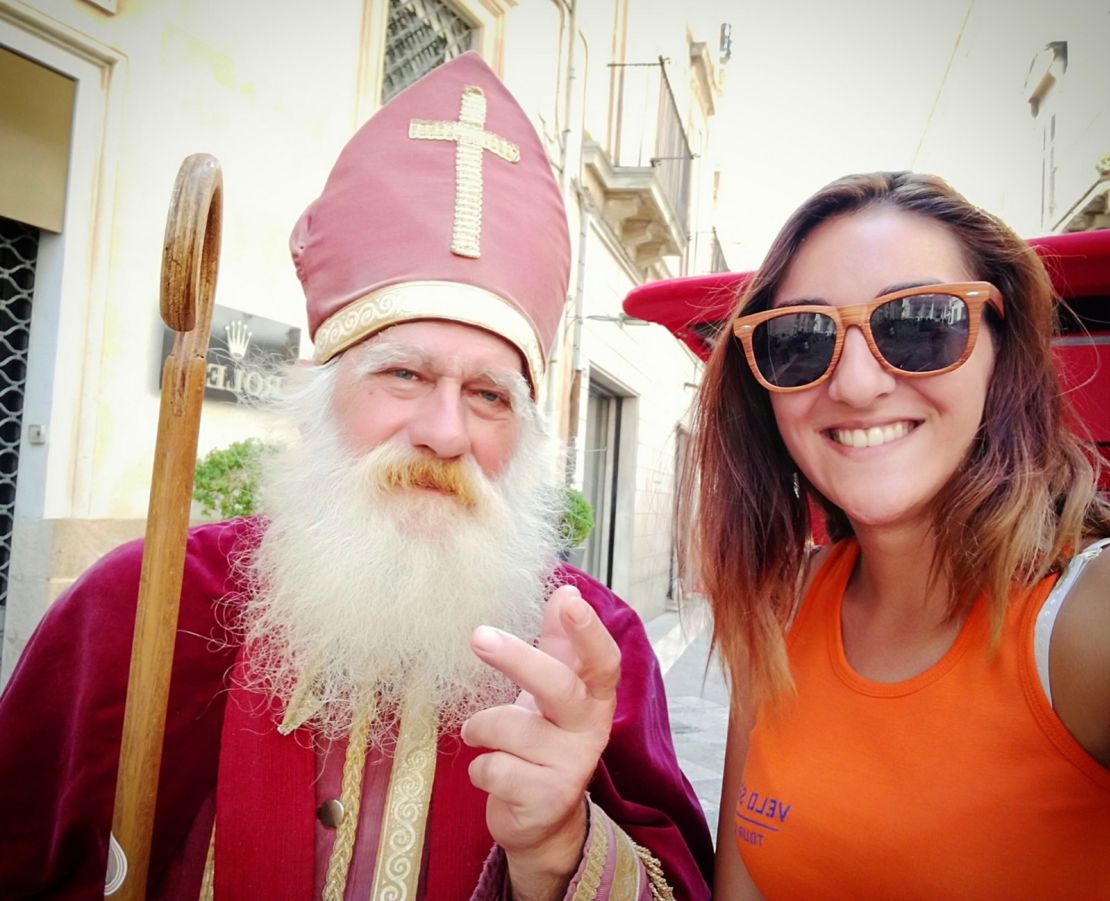
Yoga, beer and T-shirts
Many spots in Bari are named after the saint. There’s a San Nicola bakery, a stadium, a bar, a hotel and an orecchietteria (a shop where traditional handmade ear-shaped orecchiette pasta is sold).
In December actors walk around town alternatively dressed as Santa and San Nicola.
Paco Ricchiuti, head of Velo Service, a local tourist operator, has started to cash in on Bari’s Christmas tie. He organizes guided tours to the basilica and the local museum where Saint Nicholas artifacts are held.
Other tour stops include San Nicola stadium, a research center dedicated to the saint and wall paintings around the town that have turned Saint Nick into a pop-art hero. In the Bari Vecchia historic district, there are various murals of the local hero, including one in which he’s doing yoga.
Ricchiuti says he wants to turn Bari’s Christmas link into a brand.
“We take visitors on guided walking, bike and rickshaw tours, the vehicles have just been painted with images of San Nicola and Father Christmas, and we like to take actors dressed as both along to enhance the experience,” he says.
Tourists are also treated to the popular San Nicola beer made with local ingredients. A smaller beer bottle called “Nicolino” features an image of the saint on its label.
Brewer Paola Sorrentino says she created the beer to pay homage to the saint, who’s also the protector of beer-makers and strangers.
“I’m Neapolitan and this city has welcomed me with open arms, just like its patron. Plus I’m a brewer so what better way to celebrate and thank San Nicola,” she says.
Souvenir T-shirts bearing the image of San Nicola can also be bought in Bari, but Ricchiuti says the town should do more to sponsor the Christmas link worldwide.
“I’m happy that the real Santa is buried in my hometown, which is the origin place of the myth of Santa Claus,” he says. “People around the world envy this and we don’t realize how blessed we are.”
